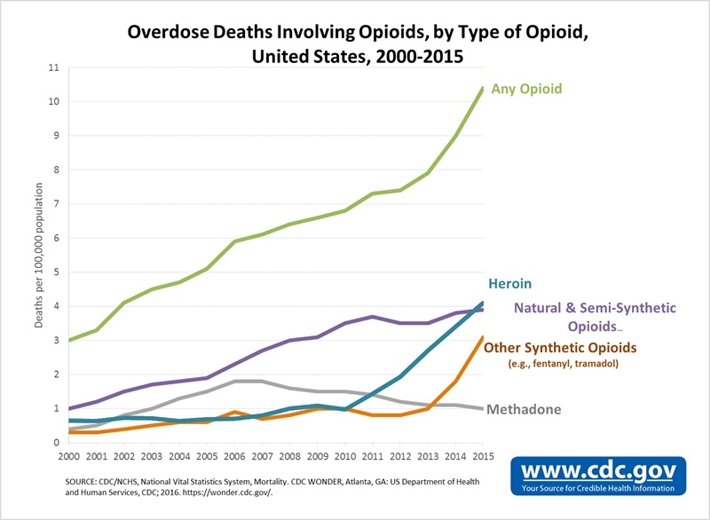Is America’s Opioid Epidemic Going International?
Over the last several years, hundreds of thousands of American families have suffered the heartbreak of losing someone they love to a drug overdose. Now, it appears that this scourge may begin to wreak a similar havoc in other countries as pharmaceutical companies seek growing markets overseas.
For more than a decade, the top drug taking those lives in the U.S. has been prescription painkillers as you can see in this chart from the Centers for Disease Control and Addiction. The purple and orange lines in the image below represent deaths from prescription painkillers. The exception is the very last surge of fentanyl-tramadol deaths. That’s because of the arrival of illicit fentanyl to the American market in the last few years.

Even the blue line representing heroin deaths has a close relationship to painkiller distribution and use. See how the line begins to climb rapidly after 2010? That was the year the formula for OxyContin was changed to make it harder to abuse. Pill mills also began to be shut down, most famously in Florida, a highly popular destination for those who wanted to get their hands on hundreds of pills at a time. The natural progression for those desperately addicted to opioids was to find heroin.
Making matter much, much worse, a new pattern of heroin distribution spread across the country. A new breed of drug dealers began to deliver heroin into the suburbs, eliminating the need to visit sketchy open air markers in urban centers.
America Begins to Fight Back
It took a few years of disastrous, heartbreaking losses for the American public, businesses and agencies to begin to coordinate the effort to fight this spreading epidemic. Grieving parents went public, local newspapers carried stories on local youth who fell to this problem, and gradually, government agencies and other organizations began to demand change. In March 2016, the Centers for Disease Control and Prevention published new guidelines for prescribing opioid painkillers. One guideline was tailored for healthcare practitioners and the other was tailored for patients.
“Start Low, Go Slow,” the guideline for practitioners said, meaning to start at the lowest reasonable dosage and only increase it slowly as needed. Patients in pain may need an increased dose of painkiller because they become “tolerant”—meaning their body soon needs more of a dosage to deal with the same level of pain. This is the path many people have taken to arrive at addiction—an escalating dose that segues right into full-blown addiction.
Later federal action initiated legislation to provide better treatment options for the addicted. And everywhere, families, community coalitions and agencies opening the conversation about the reality of addiction blew the topic wide open and began to eliminate the idea that this was something shameful to keep hidden. As a result of these and many more changes, the number of prescriptions of painkillers began to slide.
What is the natural and predictable result? Pharmaceutical companies are looking for new markets overseas. What new parts of the world will be in the crosshairs for increased prescribing of painkillers? Keep reading Part II to find out.


 ®
®